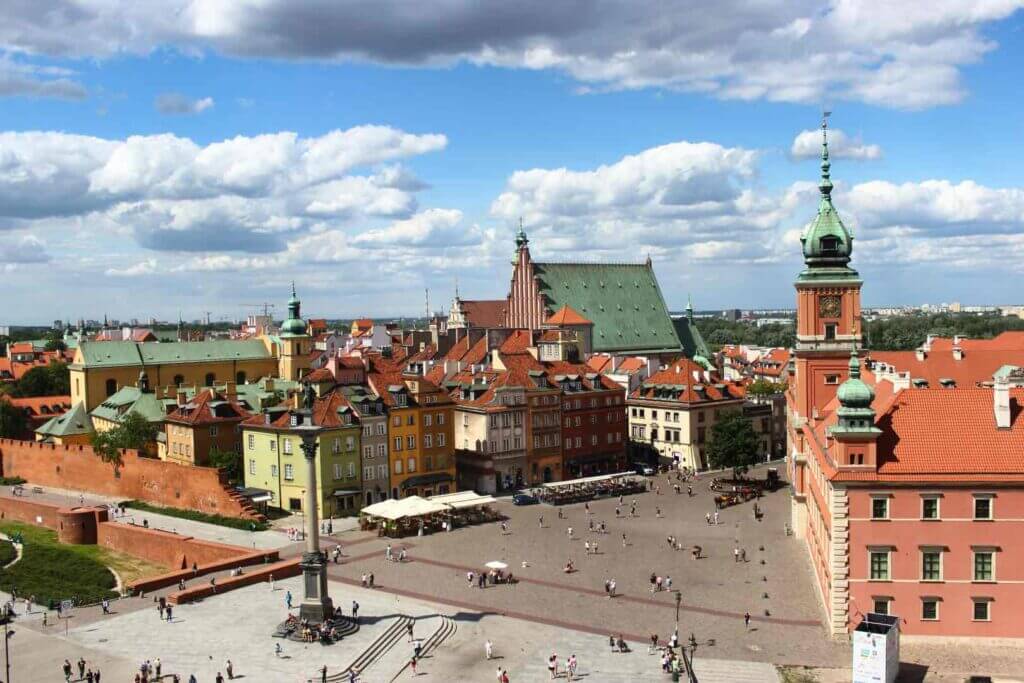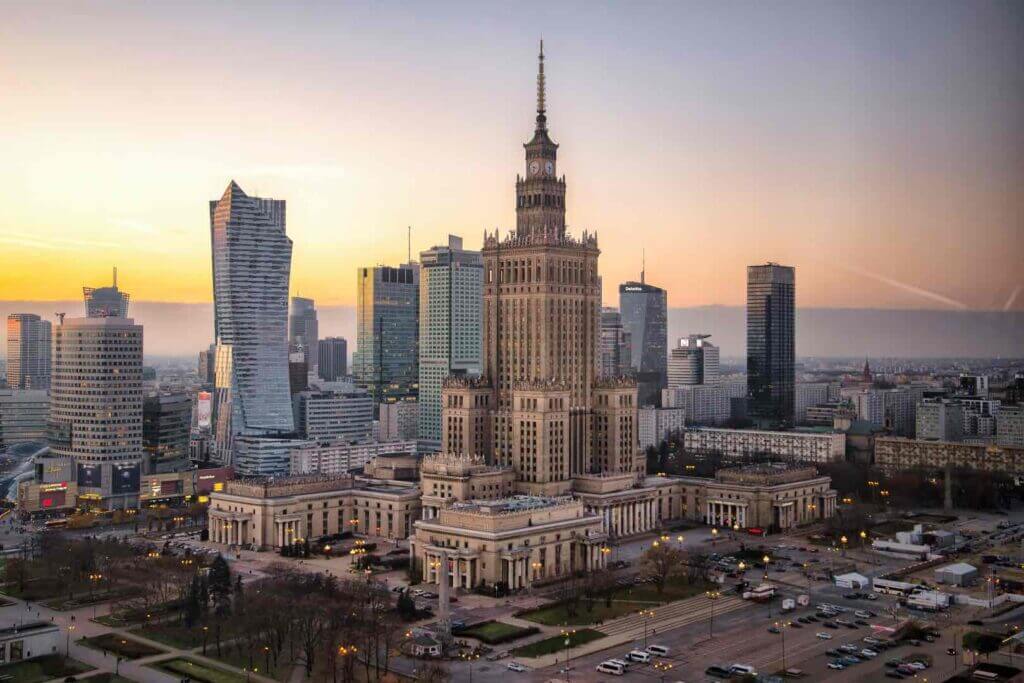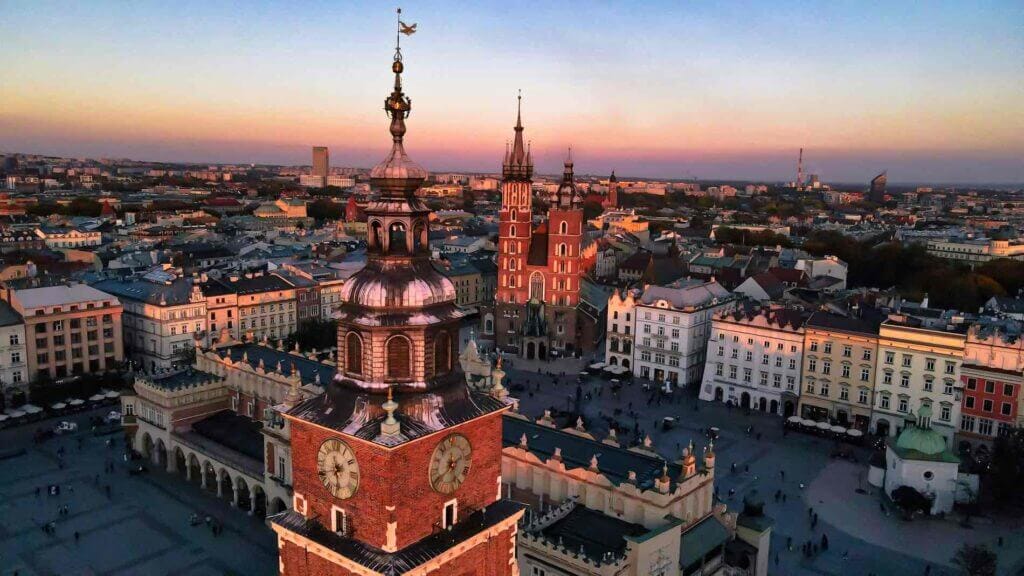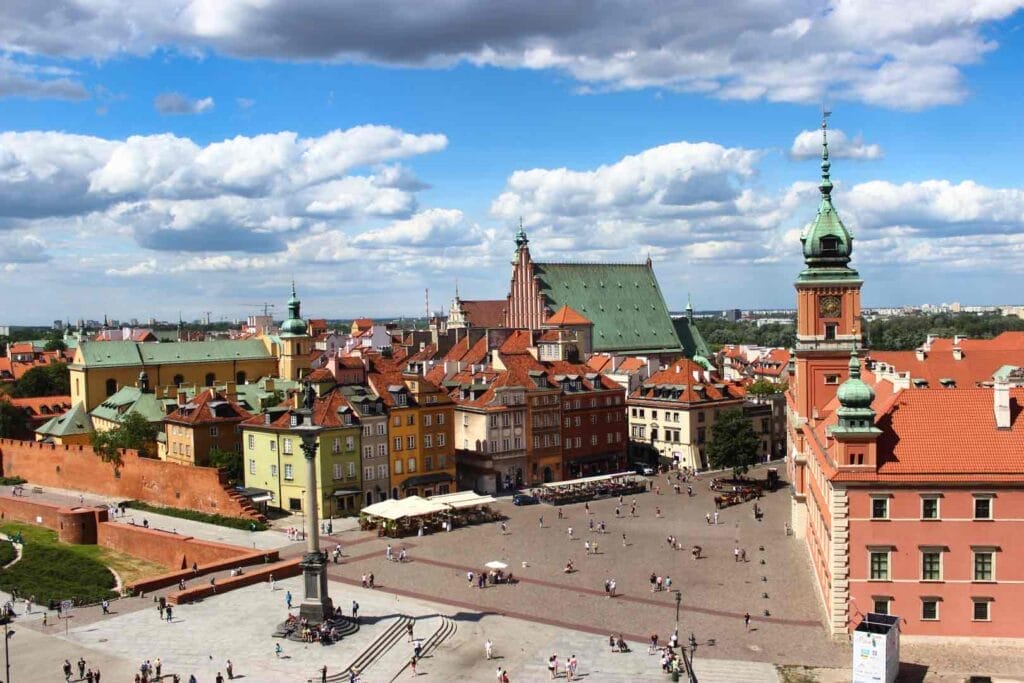Poland
Poland, with its incredible history and UNESCO World Heritage Sites, is a wonderful and too often overlooked destination. Most travellers come visit Krakow, or maybe spend a day or two in Warsaw.
Poland, officially the Republic of Poland, is a country located in Central Europe. It is divided into 16 administrative provinces, covering an area of 312,696 square kilometres, and has a largely temperate seasonal climate.
In Poland’s capital city of Warsaw, trawl the markets of Old Town Square and visit the Baroque-style Krasinski Palace in the New Town.
Krakow, the medieval city looks like it was taken straight out of a fairy tale, with its bustling market square, spiralling Gothic towers, castles and legends of dragons. Explore the city’s narrow backstreets, hidden courtyards and the network of underground cellars and tunnels.
Below you will find comprehensive guides to the country.

Best Time To Visit
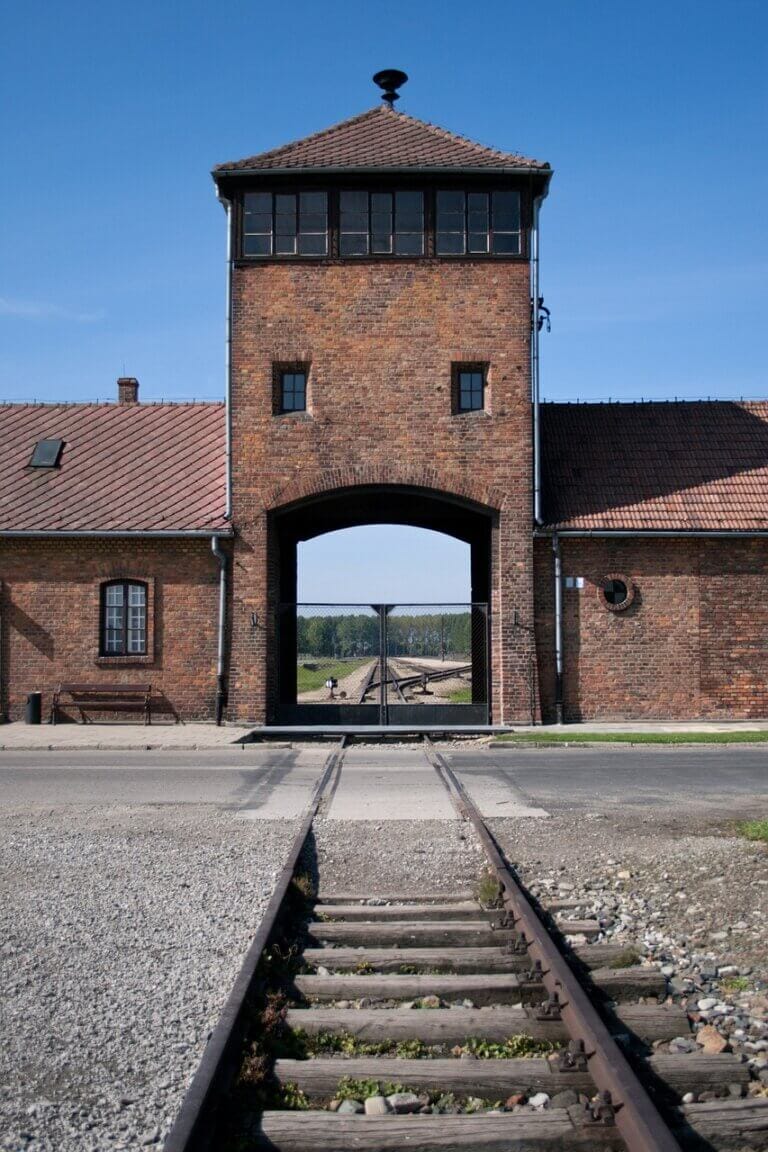
Poland’s main tourist season is in the Summer (June – August), when the resorts on the Baltic coast get the warmest temperatures.
For exploring the mountainous regions, the best time to visit is in the Spring (April/ May) when the flowers are at their most vivid. You will find this is the best time of year if you want it a little quieter and you won’t be queuing for anything.
Autumn is the Polish cultural season, and hotels tend to be emptier after the holiday period.
In Winter, the icy temperatures mean the South of the country is perfect for skiing. It can be bitterly cold in winter. Be sure to check out Krakow’s Christmas Markets if you go around this time of year.
In all honesty, anytime of year is great to visit Poland! What a place!
For a month by month look click here
What To Expect
Capital: Warsaw
Language: The official language of Poland is Polish. ‘Hello’ and ‘Thank You’ in Polish: “cześć” and “Dziękuję”
Currency: The official currency of Poland is the Złoty (PLN). £1 GBP is equivalent to 5.28 PLN and $1 USD is 3.77 PLN. Check the latest rates here
Credit Cards & ATMs: You can use an ATM for getting some Polish money. ATMs are called ‘bankomat’ and you will find them all over the place – there are more than 22 000 ATMs located across Poland! Most places will accept card but its always best to have cash for market stalls or smaller bars and restaurants. You will find your money goes along way in Poland!
Plugs: For Poland there are two associated plug types, types C and E. Plug type C is the plug which has two round pins and plug type E is the plug which has two round pins and a hole for the socket’s male earthing pin. Poland operates on a 230V supply voltage and 50Hz.. I recommend buying a universal adapter
Safety: Most visitors to Poland experience no difficulties. Serious crime against foreigners is rare, but crimes do occur and in some cases attacks have been racially motivated. You should be alert to the possibility of street crime and petty theft, and that foreigners may appear to be easy targets. We have never had any issues.
Random useful tip: Mix with the locals! Wherever you decide to travel to in Poland, one of the best things to do is to make friends with the locals. Not only will they show you the best spots for culture and Polish cuisine but they will also share with you about their history in a way that you just can’t experience anywhere else.
Never ever: Don’t refer to Poland as an Eastern European country, but acknowledge their pivotal role in Europe
Top 5 Things to See and Do in Poland
(Note: Poland is brimming with activities. Truly, there’s an abundance to explore and experience. The following are just a few of our top picks. For more country-specific activities, refer to the detailed guides linked to each country below!)
Located near the town of Oświęcim, the Auschwitz-Birkenau complex serves as a chilling reminder of the horrors of the Holocaust. As the largest Nazi concentration and extermination camp, this site witnessed the death of over a million innocent lives. A visit here is profound and moving, offering a sobering look into one of history’s darkest chapters. The preserved barracks, watchtowers, and personal belongings of the victims make the narratives of human suffering and resilience palpably real. It’s a place of remembrance and education, ensuring that such atrocities are never forgotten.
Kraków’s historic centre, a UNESCO World Heritage site, is a captivating blend of medieval charm, architectural beauty, and vibrant culture. At its heart lies the Rynek Główny, Europe’s largest medieval town square, surrounded by historic townhouses and dominated by the Cloth Hall and St. Mary’s Basilica. With its hourly trumpet call, art museums, and bustling cafes, the Old Town is perfect for both leisurely strolls and cultural exploration. Close by, the Wawel Castle and Cathedral offer further insights into Poland’s royal and spiritual heritage.
Straddling the border between Poland and Belarus, the Białowieża Forest is one of Europe’s last and largest remaining primeval forests. Home to the continent’s heaviest land animal, the European bison, this UNESCO World Heritage site is a haven for wildlife enthusiasts. With its ancient oak trees, diverse fauna, and serene walking trails, Białowieża provides a unique opportunity to connect with nature in its most pristine form.
Nestled on the Baltic coast, Gdańsk is a port city with a rich maritime history and a distinctive Hanseatic heritage. Its beautifully restored Main Town boasts colourful facades, ornate churches, and cobbled streets. The iconic Crane over the Motława River, once a symbol of the city’s trading power, stands as a testament to Gdańsk’s historical significance. Furthermore, the city played a pivotal role in modern European history as the birthplace of the Solidarity movement, which can be explored in-depth at the European Solidarity Centre.
Just a short distance from Kraków, the Wieliczka Salt Mine invites visitors to a subterranean world of wonder. Operating since the 13th century, this UNESCO-listed site comprises a labyrinthine network of tunnels, chambers, and chapels carved entirely out of rock salt. The showstopper is the Chapel of St. Kinga, a vast underground church adorned with salt chandeliers, sculptures, and intricate carvings. Besides its artistic marvels, the mine also offers insights into the centuries-old techniques of salt extraction. The cool, microclimate of the mine is even considered beneficial for health, attracting those seeking therapeutic benefits.
Travel Guides
Below you will find guides on places in Poland, reasons to visit Poland, and how to travel on a budget.
Our Favourites
Below are some of our favourite things to do in Poland’s major cities.
Book Tours and Purchase Tickets
Travel Resources
*Disclosure: Please note that some of the links above may be affiliate links, and at no additional cost to you, I earn a commission if you make a purchase. I only recommend products and companies I use and the income goes to keeping the site community supported and ad free.

